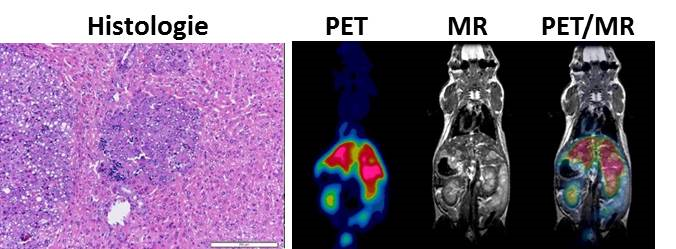SP 2
In vivo imaging and molecular profiling of treatment responses to anti-angiogenic therapies in murine liver carcinomas of defined genetic origin
Previous studies have already shown that liver cancer mouse models allow to efficiently recapitulate tumor development and treatment response of human liver carcinomas. In order to investigate the treatment response of Sorafenib, a liver cancer drug that is frequently used in the clinic, we generate liver carcinomas with different genetic backgrounds in mice and treat them with Sorafenib or the corresponding carrier. In the labs of Professor Lars Zender and Professor Bernd Pichler, these treated tumors are analyzed in detail at specific time points during therapy. These analyses allow for gaining new insights into the treatment response of Sorafenib as well as the development of therapy resistance. By analyzing gene and protein expression as well as the abundance of metabolites (by means of mRNA sequencing, metabolome and proteome analyses), different signaling pathways have already been identified that may influence the therapy with Sorafenib.

In the lab of Lars Zender, we are currently analyzing the role of these pathways on the treatment response of Sorafenib by using functional genetic assays. We specifically block important factors of these signaling cascades by means of RNA interference or pharmacological inhibitors in order to determine their role in the Sorafenib therapy.
In the lab of Bernd Pichler, the influence of Sorafenib towards liver cancer development is investigated in real-time by using multiparametric imaging analyses (PET/MRI). These longitudinal analyses are performed in the same mouse models and at the same defined time points after treatment with Sorafenib. In these analyses different typical tumor markers, such as glucose metabolism, proliferation, neoangiogenesis, hypoxia and the lipid metabolism are quantified. Furthermore, the imaging data are provided for modelling approaches of the tumor development under therapy by the group of Matthias Reuss.
Taken together, the analyses from subproject 2 allow for connecting the therapy responses of Sorafenib to the metabolism and the genetic of liver tumors and may help to further improve the treatment response of liver cancer patients in the future.
Keywords: murine HCCs, Sorafenib therapy, oncogenomics, metabolomics, proteomics, multiparametric imaging



